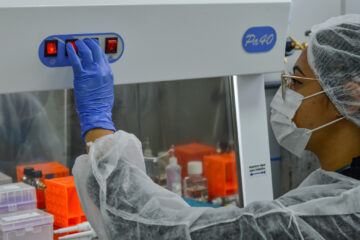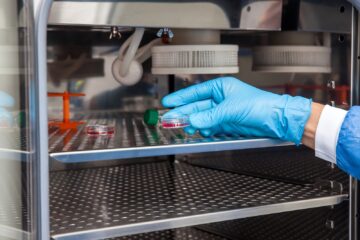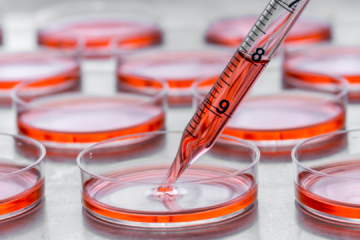Molecular virology assays play a crucial role in the assessment and monitoring of Advanced Therapy Products (ATPs), designed to detect and quantify the presence of viruses or viral elements in therapeutic products, ensuring the safety and efficacy of these treatments before they are administered to patients. In this article, we will elaborate on the key contributions, methodologies, and steps of molecular virology assays for the evaluation of Advanced Therapy Products.
Relevance and Key Contributions of Molecular Virology Assays:
Molecular virology assays contribute in various ways to the development of advanced therapy products, ranging from the detection of viruses and viral elements to product quality assessment, regulatory compliance, and approval. Below are examples highlighting their contributions and significance:
- Virus and Viral Element Detection: Advanced therapy products involve genetic modification or manipulation of human or animal cells to treat diseases. However, there can be potential risks of virus or viral element contamination during the development or manufacturing process of these products. Molecular virology assays are essential to identify any undesired presence of viruses or viral genetic material, ensuring that the products are free from contamination.
- Viral Integrity Monitoring: Many advanced therapies involve the introduction of modified viral vectors, such as adeno-associated viruses (AAVs) or retroviruses, to deliver corrective genetic material to patient cells. Molecular virology assays are used to verify the integrity of these viral vectors, ensuring that they maintain their desired characteristics and do not exhibit unintended mutations that could affect treatment efficacy and safety.
- Product Quality Assessment: Molecular virology assays are also employed to evaluate the overall quality of therapeutic products. They help determine whether advanced therapy has been produced according to specifications and meets established quality standards. This is essential to ensure that patients receive consistent and effective treatments.
- Manufacturing Process Validation: During the development and manufacturing of advanced therapy products, production processes can influence the purity and safety of the final product. Molecular virology assays are used to validate manufacturing processes, ensuring that the methods employed do not result in contamination by viruses or viral elements.
- Risk Minimization for Patients: Early detection of undesired viruses or viral elements is crucial to minimize risks for patients who will receive these treatments. Advanced therapies are often used to treat serious or debilitating diseases, and any potential risks associated with viruses must be carefully assessed and mitigated.
- Regulation and Approval: Molecular virology assays play a fundamental role in the regulatory and approval process of advanced therapy products by health regulatory agencies. Robust molecular virology data is necessary to demonstrate the safety and efficacy of therapeutic products and obtain approval for clinical use.
Main Methodologies
Molecular virology assays for advanced therapies can be conducted using various methodologies, including qPCR, RT-qPCR (reverse transcription real-time PCR), infectious virus titering, and TCID50 (50% tissue culture infectious dose).
Each of these techniques plays a significant role in assessing the presence of viruses, viral load, and viral viability in therapeutic products. Let’s explore how these techniques can be applied:
- qPCR (Real-Time PCR): qPCR is a DNA or RNA amplification technique that enables precise detection and quantification of viral genetic material. In this assay, specific primers and probes are designed to amplify DNA or RNA sequences of the target virus. Amplification detection occurs in real time through fluorescent probes. The quantity of viral genetic material present in the product is measured in relation to reference standards and standard concentration curves. qPCR is used to quantify viral load and assess the presence of viral genetic material in therapeutic products. It aids in identifying viral contamination and monitoring the integrity of viral genetic material.
- RT-qPCR (Reverse Transcription Real-Time PCR): RT-qPCR is a variation of qPCR that includes a reverse transcription (RT) step before amplification. This allows for the detection and quantification of viral RNA, which is useful for viruses with RNA genetic material, such as HIV. RT converts viral RNA into complementary DNA (cDNA) prior to amplification. RT-qPCR is used to detect and quantify viral RNA in therapeutic products, particularly in the case of therapies based on RNA viruses.
- Infectious Virus Titering: Infectious virus titering involves determining the concentration of infectious virus in a sample. This is achieved by infecting cultured cells with the sample and observing the cytopathic effect (cell death) caused by the virus. The titer is expressed as the amount of virus capable of causing cytopathic effect in a specific quantity of cells. Infectious virus titering is used to assess viral viability and the virus’s ability to infect cells. This is important for advanced therapy products involving the administration of modified live viruses.
- TCID50 (50% Tissue Culture Infectious Dose): TCID50 is a quantitative method that estimates the amount of infectious virus present in a sample based on dilutions that result in cytopathic effect in 50% of inoculated cells. TCID50 is used to determine the concentration of infectious virus in a sample and evaluate the efficacy of antiviral treatments.
These techniques are a fundamental part of assessing the safety and efficacy of advanced therapy products, ensuring that patients receive treatments free from viral contamination and with appropriate viral viability. Each technique has its specific application and contributes to a comprehensive understanding of the presence and viral activity in therapeutic products.
Virus Selection for Assays
The specific choice of viruses for nucleic acid detection in molecular virology assays for advanced therapy products is based on several factors, including clinical relevance, prevalence, potential for contamination, patient safety, and regulatory considerations. Viruses such as CMV, HIV-1, HIV-2, HTLV-I, HTLV-II, EBV, HBV, HCV, and B19 are often selected due to their detailed characteristics and clinical significance, outlined as follows:
- CMV (Cytomegalovirus): CMV is a common virus that can cause asymptomatic infections in healthy individuals, but it can be dangerous for immunocompromised patients. Detecting CMV is important to identify the presence of this virus in advanced therapy products, particularly because it can be transmitted by cell or tissue donors.
- HIV-1 and HIV-2 (Human Immunodeficiency Virus): Monitoring HIV is crucial, especially in cellular or genetic therapies where patient cells may be modified or manipulated. HIV detection is essential to ensure that the virus is not introduced into therapeutic products and that patients are not exposed to additional risks.
- HTLV-I and HTLV-II (Human T-Cell Leukemia Viruses): These viruses may be present in certain populations and are important for detection, especially when advanced therapy products involve manipulation of T cells. The presence of HTLV can impact the safety and efficacy of treatments.
- EBV (Epstein-Barr Virus): EBV is a common virus that can lie latent in human cells. Its detection is relevant to prevent unwanted viral contamination in advanced therapy products involving cell manipulation.
- HBV (Hepatitis B Virus): HBV is a concern due to its ability to cause chronic liver infections. Detection is essential to prevent the introduction of this virus into therapeutic products and to protect patients.
- HCV (Hepatitis C Virus): Similar to HBV, HCV can also cause chronic infection and affect the liver. Detection is important to prevent contamination and ensure the safety of therapeutic products.
- B19 (Parvovirus B19): B19 is a virus that can cause anemia in certain patient groups. Its detection is relevant to avoid safety issues and to ensure that therapeutic products do not contain this virus.
Main Stages of Molecular Virology Assays
A molecular virology assay for advanced therapy products, utilizing the detection of specific viral nucleic acids, plays a crucial role in ensuring the safety and efficacy of these products. This type of assay is used to identify and quantify the presence of these viruses in therapeutic products, as well as to monitor their integrity and assess the quality of the final product. Let’s explore how this assay can be conducted and its main stages:
- Choice of Detection Method: Nucleic acid detection assays (such as real-time PCR, qPCR) are commonly used in molecular virology to identify the presence of viral genetic material. They involve amplifying specific segments of the viral genome through the polymerase chain reaction (PCR) and subsequent real-time detection of the amplification.
- Design of Specific Primers and Probes: For each target virus (such as CMV, HIV-1, HIV-2, HTLV-I, HTLV-II, EBV, HBV, HCV, and B19), specific primers and probes are designed. These primers and probes are short DNA molecules designed to bind to unique DNA or RNA sequences of the target virus. Amplification of viral genetic material using specific primers enables precise detection and quantification.
- Nucleic Acid Extraction: Prior to detection, viral nucleic acids need to be extracted from the therapeutic product. This often involves a purification step to separate viral nucleic acids from other components of the product. Extraction methods vary but often involve chemical treatments and centrifugation processes.
- Amplification and Detection: Assuming real-time PCR (qPCR) is chosen for the assay, the viral genetic material present in the extracted nucleic acids will be amplified for detection. During qPCR, amplification is monitored in real time through fluorescent probes that bind to the amplified DNA. Increased fluorescence detection indicates the presence of the target virus.
- Quantification and Analysis: The quantity of viral genetic material present in the therapeutic product is determined by qPCR, allowing viral load and the integrity of viral genetic material to be assessed. Results are interpreted in relation to reference standards and known concentration standard curves.
Detection of viral nucleic acids is critical to ensuring the safety of the therapeutic product. This allows developers and manufacturers to assess viral contamination by monitoring the purity of the final product. Additionally, it helps identify any manufacturing process issues that could lead to viral contamination. These assays are essential for regulatory approval as they demonstrate the safety and quality of advanced therapy products.
It is important to note that the methodology and protocols applied in the assay may vary depending on the specific context of the therapeutic product, available technologies, and applicable regulations.
Detection of viral nucleic acids is a critical part of the comprehensive evaluation of the quality and safety of advanced therapy products, protecting patients and ensuring the effectiveness of these innovative treatments.
About Crop:
Crop is a next-generation research services company specializing in the development of biological products, advanced therapies, medical devices, cosmetics, and sanitizers. With expertise in molecular and cellular methodologies, Crop offers tests that minimize human involvement and provide precise mechanistic data for safety and efficacy validation.
Our services are available to private companies, academic institutions, and government research centers, spanning from discovery to pre-clinical phases, from screening to validation.
Contact our team to learn how we can contribute: https://cropbiolabs.com.br/contact-us/
The New Generation of Preclinical Services
Author: Carolina Barizan, Biomedical Scientist – Marketing Analyst, Crop Biolabs




